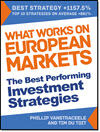Managing your own investments is exciting, but it’s easy to fall into costly traps. This article reveals the 10 biggest mistakes self-directed investors make—and how you can avoid them. You’ll learn why chasing hot stocks, holding on to losers, and over-diversifying can hurt your returns.
More importantly, you’ll discover how to invest smarter by using a proven, data-driven system. From setting clear sell rules to managing risk, this post gives you practical, easy-to-follow advice to help you avoid losses and boost your confidence in managing your portfolio.
Estimated Reading Time: 7 minutes
Managing your own investments can be exciting and rewarding, but it also comes with risks. You probably started doing this after a bad experience with a financial advisor or money manager.
Now, you’re in charge, and your goal now is to make smart decisions and avoid big losses.
One of the biggest mistakes investors make is believing that stock picking is about predictions, gut feelings, or expert opinions. This is the Core Myth of Investing—the idea that successful investors have special insight or can time the market perfectly.
The truth? The best investors don’t guess. They follow a rules-based, data-driven system that removes emotions from investing.
In this article, I will walk you through the 10 biggest mistakes self-directed investors make—and how to avoid them. PLUS, I’ll introduce you to tools that can help you invest with confidence.
1. Chasing Hot Stocks and Market Hype
It’s easy to get excited when you hear about a stock that’s skyrocketing. The news, social media, and friends all talk about it, making it seem like a sure thing. But by the time you hear about it, the stock is often already overpriced. If you buy at the peak, you risk watching it crash soon after.
Instead of chasing hype, focus on data-driven investing. A good stock isn’t one that just went up—it’s one that’s undervalued, high-quality, and still has room to grow. Our Screener helps you find stocks that are cheap compared to their true value, so you don’t overpay.
Look at the best strategies we have tested. They work great over the long term through up and down markets.
2. Holding on to Losing Stocks Too Long
It’s tough to admit when you’ve made a bad investment. Many investors hold onto losing stocks, hoping they’ll bounce back. But hope isn’t a strategy. A stock that keeps falling often has real problems—bad management, weak earnings, or too much debt.
A better approach?
Set clear sell rules. Don’t hold onto a stock just because you don’t want to admit it was a mistake.
To see what rules you can implement look at the systems we follow in our Quant Value Newsletter and Shareholder Yield Letter. Both tell you exactly when to sell based on real numbers and hard rules, so you don’t let losses pile up.
Click here to start finding ideas that EXACTLY meet your investment strategy.
3. Over-Diversifying or Under-Diversifying
Some investors think owning 50+ stocks makes them safer. Others put too much money into just one or two stocks. Both approaches can hurt your returns.
The key is balance. Holding 20-50 carefully chosen stocks gives you enough diversification without making your portfolio unmanageable.
4. Ignoring Valuation and Overpaying for Stocks
Even the best companies can be bad investments if you pay too much. If you buy a stock at a sky-high price, it must keep growing fast just to stay even. If expectations change, the stock can drop sharply—even if the company is doing well.
The solution? Always check a stock’s valuation before buying. Our Screener compares a stock’s price to its historical valuation, industry peers, and global market. This helps you find great stocks at fair prices, not overpriced ones.
5. Letting Emotions Drive Investment Decisions
Investing can let you take big price movements personally, but emotions lead to bad choices. Fear makes you sell too soon. Greed makes you buy too late and too much. Watching your portfolio too often creates stress and causes unnecessary trading.
The best way to remove emotions? Follow a rules-based system. Our Quant Value Newsletter (click the link to see the system we use – see flow charts at the bottom) gives you clear buy-and-sell signals, so you don’t have to rely on feelings.
6. Focusing Only on Dividends (And Ignoring Shareholder Yield)
Many investors love dividends, but a high dividend yield isn’t always a good thing. Sometimes, companies borrow money to pay dividends, which isn’t sustainable. Other times, a high yield means the stock price has crashed—a warning sign. Also, dividends are usually highly taxed.
Instead of looking only at dividends, look at Shareholder Yield, which includes:
✔️ Dividends (cash paid to investors)
✔️ Stock Buybacks (reducing shares, increasing value per share)
Our Shareholder Yield Letter finds stocks that offer the best total returns, not just dividends.
7. Trading Too Often (And Paying Too Much in Fees and Taxes)
Frequent trading can hurt your returns more than you think. Every trade cost money—through broker fees, bid-ask spreads, and taxes. The more you trade, the more these costs add up.
Instead of jumping in and out of stocks, follow a long-term strategy. This reduces trading costs and maximizes profits.
8. Ignoring Risk and Failing to Manage Position Sizes
Some investors bet too big on one stock, thinking they’ve found a sure winner. Others invest too little, making it impossible to see real gains.
A simple rule: Never invest more than 5% in a single stock. Diversify across different industries, but don’t spread yourself too thin. Our Stock Screener gives you lots of ideas and helps you build a balanced, high-quality portfolio with the right mix of stocks.
9. Neglecting Portfolio Reviews and Adjustments
Many investors set and forget their portfolios, only checking when the market crashes. Others tinker with their holdings too often, making changes based on emotions instead of strategy. Most investors have no strict clear strategy for selling.
The key? Yearly reviews. At least yearly check if your stocks are:
-
Overvalued (time to sell)
-
Losing momentum (time to reassess)
-
Still meeting your investment criteria (time to hold)
Our Quant Value Newsletter does this for you—so you always know which stocks to hold and which to replace. It also follows a strict trailing stop loss system and stops buying when markets are falling.
Click here to start finding ideas that EXACTLY meet your investment strategy.
10. Trying to Time the Market
Many investors sit in cash, waiting for the perfect moment to invest. Others panic-sell when the market drops. The problem? No one can time the market consistently. If you miss just a few big up days, your returns suffer.
The best strategy? Stay invested, focus on buying undervalued stocks and have a clear strategy to sell falling stocks and do not buy into falling markets.
Conclusion: Avoid These Mistakes and Invest Smarter
Managing your own money is exciting, but only if you avoid common mistakes. The best way to do that? Follow a proven, data-driven system that removes emotions and focuses on what works.
Here’s how to start investing smarter today:
🚀 Use our Stock Screener helps you find undervalued, high-quality stocks.
📩 Get high-probability investment ideas from our Quant Value Newsletter.
💰 Discover the best total return stocks with our Shareholder Yield Letter.
Investing doesn’t have to be complicated—if you follow the right system.
Start using a rules-based approach today and take control of your financial future.
FREQUENTLY ASKED QUESTIONS
1. How do I avoid falling for hot stock tips?
Don’t buy stocks just because everyone is talking about them. By the time a stock makes headlines, it’s often too expensive. Instead, follow a data-driven system to find undervalued stocks with solid growth potential. Use tools like the Quant Investing Screener to spot stocks before they’re popular. Look for undervalued companies with strong fundamentals.
2. When should I sell a losing stock?
If a stock keeps dropping, it’s better to sell and move on. Holding on to hope isn’t a strategy. Use clear sell rules to avoid big losses. For example, follow a trailing stop-loss strategy where you sell if a stock falls 20% from its peak. Both the Quant Value Newsletter and Shareholder Yield Letter tell you exactly when to sell.
3. How many stocks should I hold in my portfolio?
Owning 20 to 50 stocks is a good balance. Fewer stocks mean higher risk if one fails. Too many stocks make it hard to manage. Aim for a diverse mix of industries and countries for better protection.
4. What’s the best way to avoid emotional decisions?
Emotions can cause you to buy high and sell low. Stick to a rules-based strategy that removes emotion from the process. Use tools that give clear buy and sell signals. This way, you won’t have to rely on gut feelings.
5. Should I focus only on dividend stocks?
Dividends are great, but don’t stop there. Look at Shareholder Yield, which also includes stock buybacks and debt reduction. This approach finds companies that return value to shareholders in multiple ways—not just through dividends.
6. How often should I review my portfolio?
Review your portfolio at least once a year. Check if your stocks are still good investments or have become overvalued. The Quant Value Newsletter helps with yearly reviews and provides clear sell signals based on trailing stop-loss rules.
7. Is it possible to time the market?
No one can time the market perfectly. If you try, you’ll likely miss key gains. The best strategy is to stay invested in undervalued stocks and follow a system that avoids big losses in falling markets.
Click here to start finding ideas that EXACTLY meet your investment strategy.


